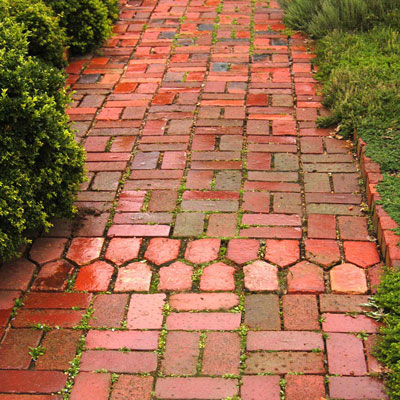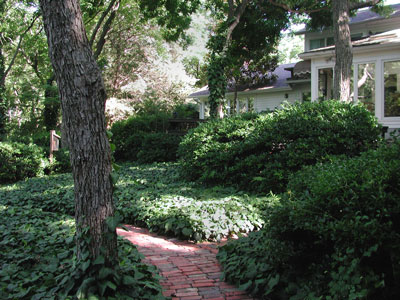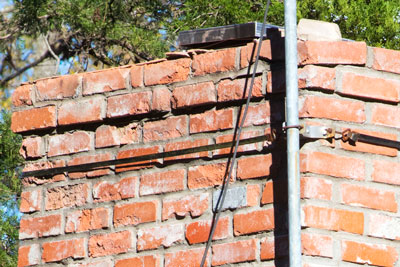Things I Know; Things I Don’t Know

Photo: Paving bricks in a New Orleans garden were manufactured for this specific use. You wouldn’t build a house out of these bricks, and you shouldn’t build a walk out of “common” (house) bricks.
When I was a teenager, I built my family a short sidewalk. I’d torn down a gas station and salvaged all of the bricks. I’ve always had a fascination with antique bricks.
But the bricks that I used on that walk in College Station were not moisture-proof, and several years of freezing and thawing caused them to slough apart and crumble. They simply weren’t made to be exposed to moisture constantly.

Photo: Antique street pavers were fired more than 110 years ago to be in constant contact with moist Collin County soil. They are not subject to damage from freezing and thawing. This is a planting of Persian ivy in our backyard landscape.
Jump ahead 25 years. I had the chance to buy street pavers after a major pipe was cut down the middle of a main street of a north Texas city. Those pavers had been in the ground more than 90 years at that time, and they were as good as new. They, I was told, had been fired much hotter, so they were impervious to moisture and therefore wouldn’t be hurt by the freeze-thaw cycles.

Photo: Chimney bricks, as I photographed them in our own chimney this week, are failing due to 38 years of exposure to rain/freezing/thawing. I should have known better.
Life is a dance where you take two steps forward and one step back. Two weeks ago I called Hale’s Chimney Service in McKinney (where we live – they serve all of DFW) to ask their help in removing an animal, we thought a squirrel, from inside our chimney. I was impressed with their professionalism and punctuality, and when they told me they had this sort of situation fairly often, I could tell by their descriptions that they really were experienced.
They extricated the rodent successfully, but then they gave me the bad news. They told me that that same old freeze-thaw thing had attacked the top of our chimney. They showed me photos of what I could see from the ground: the top 2 feet of bricks were basically just sitting atop one another with cracks all through their mortar. Our damper had rusted shut, and that’s where they had found the rodent.
We now have a new damper at the top of the chimney, and they’re making a new cap to keep further moisture out of new mortar they’ll be putting in place in a couple of weeks.
So in some small way this does apply to gardening (and walks, patios and retaining walls) as you’re choosing paving bricks for your gardens, but more than that, it applies to your safety. If you’ve not had a chimney specialist inspect your fireplace in several years, it’s a real deal – don’t wait to read in the fire department’s report that your chimney was to blame for your blaze.
Addendum: If you’re in DFW, I can tell you that Hale’s does great work. (972) 562-6851. (I have no business affiliation with them, nor have they offered nor have I requested any variation in normal pricing for their work. I’m just always happy to recommend a good person or company.) Wherever you are, find someone with experience and excellent reviews.
